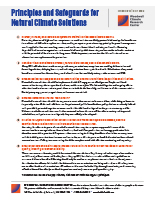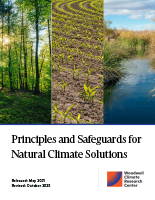Figure 1. The forest sector in relation to land use, wood products, and energy. Full and accurate accounting for the impacts of forestry activities on greenhouse gases requires estimates of changes in all of these linked systems. Graphic reproduction from Nabuurs et al. (2007), IPCC Assessment Report 4, Working Group 3.
It is critically important that accounting for increases or decreases in CO2 and other GHGs from specific activities be based on the concept of additionality, i.e., estimating changes in GHG emissions relative to a business-as-usual baseline so that mitigation benefits resulting from changes in behavior can be more clearly measured (Böttcher et al. 2008, Kurz et al. 2016). Assessing effects of NCS on GHG emissions requires comparing specific pathway scenarios with a projected reference scenario to accurately estimate the incremental net change in emissions. Applying this additionality concept ensures that estimated impacts of pathways are relative to what would have happened in the absence of proposed activities.
How to attribute results to specific actions
This principle involves the accounting and reporting of emissions and removals of carbon as a result of direct anthropogenic activity (e.g., land management). The UNFCCC initially intended to award carbon credits to countries that demonstrated reduced emissions of carbon from land use, land-use change, and forestry (LULUCF). That is, credits or debits would be awarded based on the effects of management and not based on the effects of natural disturbances or indirect anthropogenic effects (e.g. CO2 fertilization). The effects of management would be counted; the effects of environmental change would not.
Unfortunately, it is nearly impossible to distinguish between direct anthropogenic effects and indirect or natural effects based on observations alone. For example, a re-growing forest following harvest is accumulating carbon, in part, because it was harvested (management) and in part because of CO2 fertilization. As a result of this difficulty, the IPCC introduced the concept of the “managed land proxy” (IPCC 2010). Under this concept, all emissions and removals of carbon on lands designated as managed are counted, while the emissions and removals from unmanaged lands are not counted. This distinction based on areas (rather than processes—directly and indirectly anthropogenic) makes it simpler to distinguish and report (direct) anthropogenic emissions and removals. In the U.S., most lands are considered managed if activities such as fire suppression or infrastructure such as road networks are present (Ogle et al. 2018). As a result, most of the land area of the conterminous states is considered managed, while the more remote and inaccessible parts of Alaska are not. These designations follow IPCC guidelines that are designed to be commensurate with the state of science regarding attribution of effects to causes, which is an evolving field of research (IPCC 2010).
Assessing impacts of NCS is sensitive to spatial scale. For example, how much carbon is removed by forest stands that were actually harvested, and how much carbon is removed by the forests in the region? Harvesting a forest stand releases stored carbon to the atmosphere except for the amount that is retained temporarily in wood products. It takes some time for the forest regrowth to re-accumulate the amount of carbon lost. It is often claimed that these emissions should not be counted if the forests in a larger landscape or region are, on average, accumulating more carbon than is being released by harvest (e.g. Dwivedi et al. 2019). This logic conflates the effects of specific activities by entities in small domains with larger regional trends that broadly reflect the wide range of land management decisions that collectively comprise business as usual.
Full-system accounting and attribution to actions by specific entities should be linked with effective monitoring and reporting at the entity scale. The uncertainty of estimates should be minimized by following guidelines for estimating carbon stocks and rates of removal by ecosystems (U.S. Department of Agriculture 2014). Without a monitoring system that reflects the various accounting elements shown in Figure 1, the impacts of different solutions on GHG emissions and sinks cannot be assessed or would only be partially assessed, potentially leading to biased or highly uncertain representation of the effectiveness of mitigation policies. Likewise, reporting should strive to identify the additional reduction of net emissions that can be attributed to specific pathways, and if possible, separate the effects of natural and anthropogenic drivers of change.
How the principle may be applied to specific pathways (examples)
Avoid using biomass instead of fossil fuel to generate electricity — Assessments of the mitigation benefits from substituting biomass for fossil fuel sometimes fail to consider the effects of harvesting trees on forest carbon stocks and sequestration (Birdsey et al. 2018; Ter-Mikaelian et al. 2015). This mistake is typically propagated by claiming “carbon neutrality”—that is, claiming that CO2 emitted from combustion is completely and immediately offset by regrowing forests either in the project area or in a larger landscape or region in which other factors also affect carbon stocks and sequestration. Full system accounting should include additional impacts on the forest from increased harvesting or removal of logging debris, emissions from the supply chain, and net change in emissions from burning the biomass instead of fossil fuel.
Use more wood in building construction — Substituting wood products for steel and concrete in building construction will almost always have less GHG emissions when compared directly with steel and concrete using LCA methods. Nevertheless, most of the LCAs for substituting wood products underestimate emissions by failing to account for the effects of harvesting on ecosystem carbon stocks because only a small percentage of the harvested wood ends up in product, and rates of carbon accumulation are lower in the forest when fewer live trees are left standing (e.g. Gu and Bergman 2018; Puettmann et al. 2018).
Increase stocking of understocked forests — This is one of several “improve forest management” activities whereby actions can be taken to increase stocking of live trees in cases where forest ecosystems have been degraded because of partial harvesting or other disturbances that involve reduction in tree density. Actions may involve tree planting, control of competing non-tree vegetation, reduction in browsing that prevents regeneration of young tree seedlings, or removal of unhealthy trees that are not accumulating carbon and preventing others from doing so (Hoover et al. 2014; Vasievich and Alig 1996). Estimates of reductions in GHGs should be made relative to a dynamic baseline that estimates how the forest would have grown in the absence of the actions.
References
Birdsey, R., P. Duffy, C. Smyth, W.A. Kurz, A.J. Dugan, and R. Houghton. (2018) Climate, Economic, and Environmental Impacts of Producing Wood for Bioenergy. Environmental Research Letters 13, 050201. https://doi.org/10.1088/1748-9326/aab9d5
Böttcher, H., Kurz, W.A., and Freibauer, A. (2008) Accounting of forest carbon sinks and sources under a future climate protocol – factoring out past disturbance and management effects on age–class structure. Environmental Science & Policy, 11: 669–686. https://doi.org/10.1016/j.envsci.2008.08.005
Dwivedi, P, M Khanna, and Madisen Fuller. (2019) Is wood pellet-based electricity less carbon-intensive than coal based electricity? It depends on perspectives, baselines, feedstocks, and forest management practices. Environmental Research Letters 14 024006. https://doi.org/10.1088/1748-9326/aaf937
Gu, H. and R. Bergman (2018) Life cycle assessment and environmental building declaration for the Design Building at the University of Massachusetts. General Technical Report FPL-GTR-255. Madison, WI: U.S. Department of Agriculture, Forest Service, Forest Products Laboratory. 71 p.
https://www.srs.fs.usda.gov/pubs/56321
Hoover, C., R. Birdsey, B. Goines, P. Lahm, et al. (2014) Chapter 6: Quantifying Greenhouse Gas Sources and Sinks in Managed Forest Systems. In Quantifying Greenhouse Gas Fluxes in Agriculture and Forestry: Methods for Entity-Scale Inventory. Technical Bulletin Number 1939, Office of the Chief Economist, U.S. Department of Agriculture, Washington, DC. 606 pages. [Eve, M., D. Pape, M. Flugge, R. Steele, D. Man, M. Riley-Gilbert, and S. Biggar, (Eds.)] https://www.usda.gov/sites/default/files/documents/USDATB1939_07072014.pdf
IPCC 2010, Revisiting the Use of Managed Land as a Proxy for Estimating National Anthropogenic Emissions and Removals, eds: Eggleston H.S., Srivastava N., Tanabe K., Baasansuren J. (2010) IPCC Expert Meeting Report, 5–7 May, 2009, INPE, São José dos Campos, Brazil, Pub. IGES, Japan. https://www.ipcc-nggip.iges.or.jp/public/mtdocs/pdfiles/0905_MLP_Report.pdf
Kurz, W.A., S. Hayne, M. Fellows, J.D. MacDonald, J.M. Metsaranta, M. Hafer, and D. Blain. (2018) Quantifying the impacts of human activities on reported greenhouse gas emissions and removals in Canada’s managed forest: conceptual framework and implementation. Canadian Journal of Forest Research 48, 1–14. https://doi.org/10.1139/cjfr-2018-0176
Kurz, W.A., C. Smyth, T. Lemprière. (2016) Climate change mitigation through forest sector activities: principles, potential and priorities. Unasylva 246. http://www.fao.org/3/i6419en/I6419EN.pdf
Lemprière, T.C., Kurz, W.A., Hogg, E.H., Schmoll, et al. (2013) Canadian boreal forests and climate change mitigation. Environmental Reviews 21(4), 293–321. https://doi.org/10.1139/er-2013-0039
Nabuurs, G.J., O. Masera, K. Andrasko, P. Benitez-Ponce, et al. (2007) Forestry. In Climate Change 2007: Mitigation. Contribution of Working Group III to the Fourth Assessment Report of the Intergovernmental Panel on Climate Change [B. Metz, O.R. Davidson, P.R. Bosch, R. Dave, L.A. Meyer (eds)], Cambridge University Press, Cambridge, United Kingdom and New York, NY, USA. ISBN: 9780511546013.
Ogle, S.M., G. Domke, W.A. Kurz,et al. (2018) Delineating managed land for reporting national greenhouse gas emissions and removals to the United Nations framework convention on climate change. Carbon Balance Manage 13, 9. https://doi.org/10.1186/s13021-018-0095-3
Ter-Mikaelian, M.T., S.J. Colombo, and J. Chen. 2015. The burning question: Does forest bioenergy reduce carbon emissions? A review of common misconceptions about forest carbon accounting. Journal of Forestry 113, 12 p. https://doi.org/10.5849/jof.14-016
U.S. Department of Agriculture. 2014. Quantifying Greenhouse Gas Fluxes in Agriculture and Forestry: Methods for Entity-Scale Inventory. Technical Bulletin Number 1939, Office of the Chief Economist, U.S. Department of Agriculture, Washington, DC. 606 pages. https://www.usda.gov/sites/default/files/documents/USDATB1939_07072014.pdf
Vasievich, J.M. and R.J. Alig. 1996. Opportunities to increase timber growth and carbon storage on< timberlands in the contiguous United States. In Sampson, R. N., Hair, D., & American Forestry Association. (1996) Forests and global change: Vol. 2. Washington, D.C: American Forests. ISBN: 0935050043






